当前位置:网站首页>Verilog design responder [with source code]
Verilog design responder [with source code]
2022-07-07 11:15:00 【Lime Miya】
Answering machine design
1、 The experiment platform
Software :PC、Quartus Prime 18.1、Modelsim 10.5b
Hardware :Altera FPGA Development board (EP4CE6E22F17C8)
2、 The experiment purpose
- 1、 Master the dynamic refresh principle of nixie tube
- 2、 Logic exercises
2.1、 Experimental content
Based on 8 position 8 A digital tube and 4 A mechanical key , Make a answering machine , The requirements are as follows :
1、 Set four keys , Three of them A、B、C, host 0;
2、 The host has the permission to clear all States
3、 After each rush to answer , Players need to be 10S Make a choice , No test is regarded as giving up , Once a contestant presses the button , The keys of the other two players will fail
4、 If there is no contestant to answer , The nixie tube shows 10s count down , At the end of the time ,LED Keep blinking ; meanwhile , All players' keys fail , Until the host starts again
5、 The leftmost display shows the countdown , The lower three places, from left to right, represent the contestants ABC, When a contestant answers , The corresponding characters will be displayed (A or B or C), At the same time, the countdown pauses , Until the host presses , All States are restored , Start a new round of answer .
3、 Experimental process
3.1、 Experimental principle
According to the schematic diagram of the development board , The following information is available
Nixie tube : It is essentially a group of light-emitting diodes arranged in a certain order , Its display principle and LED It's no different .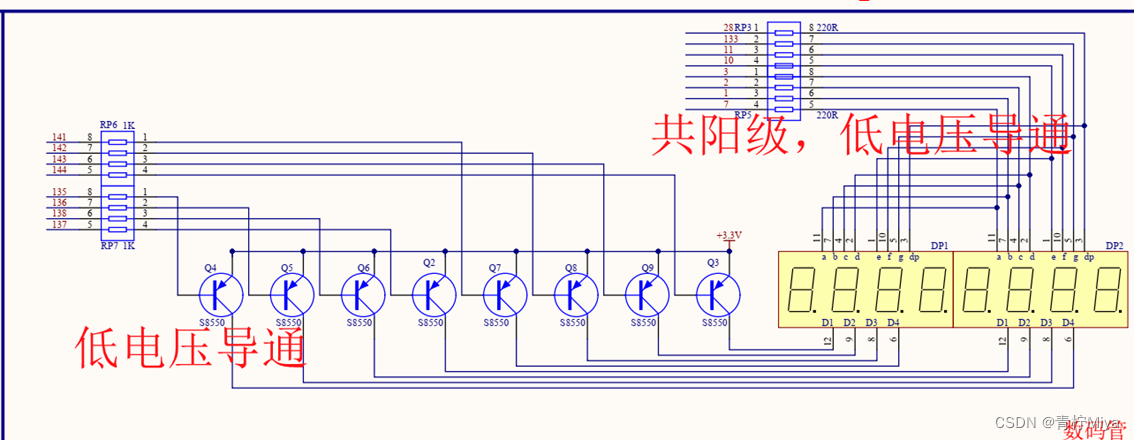
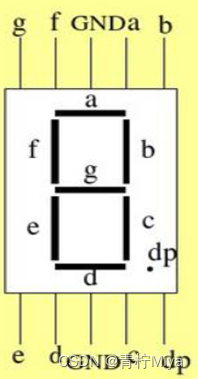
According to the hardware schematic diagram , Light-emitting diode , All anodes are switched on 3.3V Positive voltage of , That is to say — High level , So if we want to
If the LED is on , It is necessary to turn on the low level at the cathode , You can make LED Light up .
3.2、 System architecture
According to the system requirements , The following frame distribution can be obtained
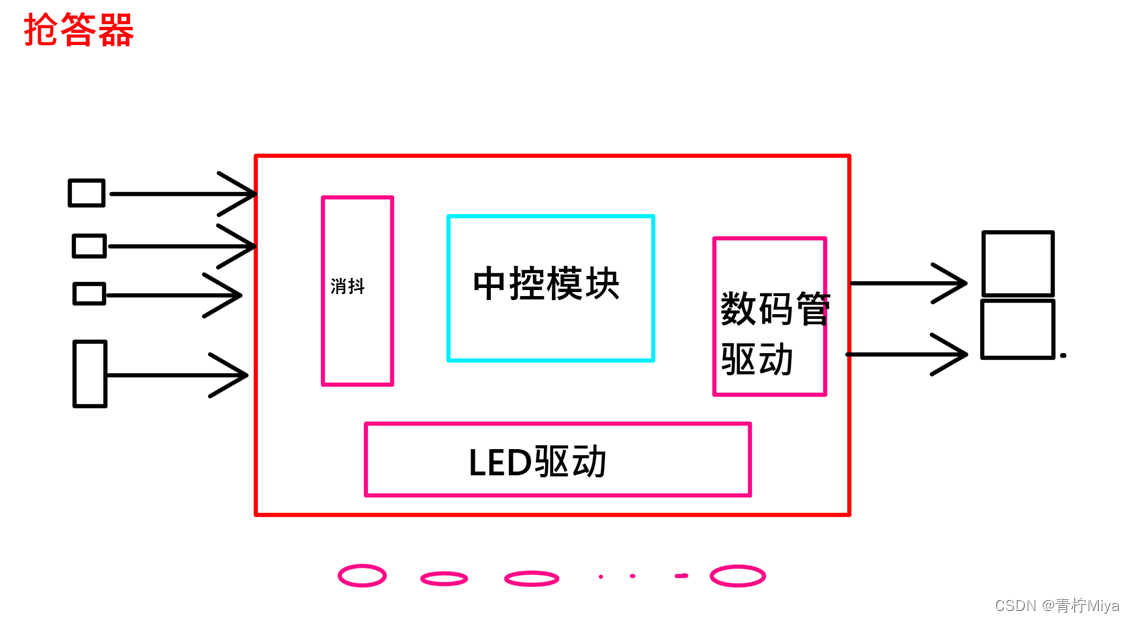
3.3、 Sub function module design
Build according to the system , The following modules are available
3.3.1、 Central control module
Block diagram
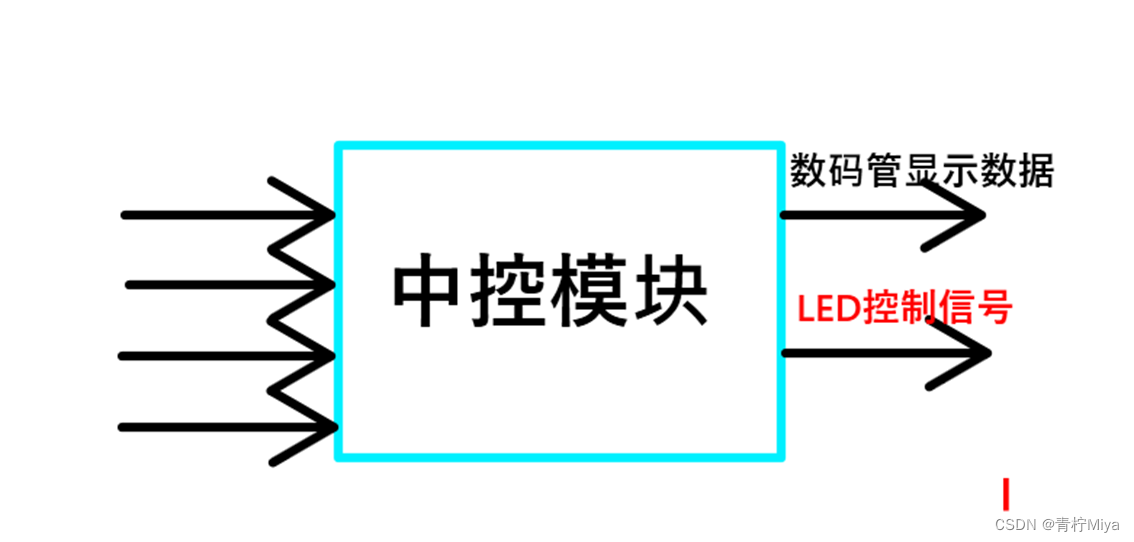
Signal definition
| Signal name | Port type | Data bit width | Signal description |
|---|---|---|---|
| Clk | i | 1 | Input clock signal ,50MHz |
| Rst_n | i | 1 | Input reset signal , Low level active |
| key_A | i | 1 | player A Key |
| key_B | i | 1 | player B Key |
| key_C | i | 1 | player C Key |
| key_0 | i | 1 | Host button |
| Data_time | O | 16 | 10s Countdown data |
| Led_en | O | 1 | The countdown is over , Can make LED flashing |
Design documents
/*================================================*\ Filename ﹕ctrl_mode.v Author ﹕Adolph Description ﹕ Central control module , Command parsing , Data display control Called by ﹕responder.v Revision History ﹕ 2022-6-20 15:20:43 Revision 1.0 Email﹕[email protected] Company﹕ \*================================================*/
module ctrl_mode(
input clk ,
input rst_n ,
input [3:0] key_ctrl, // Key debounce signal
output [3:0] data ,
output reg [3:0] key_sta , // Key status signal
output reg led_en
);
//parameter declarations
parameter TIME_S = 26'd50_000_000;
//internal reg / wire signals
reg [25:0] cnt_1s ;
wire add_1s ;
wire end_1s ;
reg latch_log;
reg [3:0] cnt_delay;// Show 9-0
wire add_delay;
wire end_delay;
assign data = cnt_delay;
// assign led_en = end_delay;
[email protected](posedge clk or negedge rst_n)begin
if(!rst_n)begin
led_en <= 1'b0;
end
else if(key_ctrl[0])begin
led_en <= 1'b0;
end
else if(end_delay)begin
led_en <= 1'b1;
end
else begin
led_en <= led_en;
end
end
[email protected](posedge clk or negedge rst_n)begin
if(!rst_n)begin
key_sta <= 4'b0000;
end
else if(key_ctrl[0])begin // After the host presses the key
key_sta <= 4'b0001;
end
else if(latch_log)begin
key_sta <= key_sta;
end
else begin
case(key_ctrl)
4'b0010:key_sta[1] <= 1'b1;
4'b0100:key_sta[2] <= 1'b1;
4'b1000:key_sta[3] <= 1'b1;
default: ;
endcase
end
end
[email protected](posedge clk or negedge rst_n)begin
if(!rst_n)begin
latch_log <= 1'b1; // After initial power on , Lock in effect
end
else if(key_ctrl[0])begin // Host press , Lock failure , Players press valid
latch_log <= 1'b0;
end
else if(key_ctrl[1] || key_ctrl[2] || key_ctrl[3] || end_delay)begin // After any player presses , Lock in effect ; The countdown is over , Players are also not allowed to press buttons
latch_log <= 1'b1;
end
else begin
latch_log <= latch_log;
end
end
[email protected](posedge clk or negedge rst_n)begin
if(!rst_n)begin
cnt_1s <= 'd0;
end
else if(add_1s)begin
if(end_1s)begin
cnt_1s <= 'd0;
end
else begin
cnt_1s <= cnt_1s + 26'd1;
end
end
else begin
cnt_1s <= cnt_1s;
end
end
assign add_1s = key_sta == 4'b0001;
assign end_1s = add_1s && cnt_1s >= TIME_S - 'd1;
[email protected](posedge clk or negedge rst_n)begin
if(!rst_n)begin
cnt_delay <= 'd10;
end
else if(key_ctrl[0])begin
cnt_delay <= 'd10;
end
else if(add_delay)begin
if(end_delay)begin
cnt_delay <= cnt_delay;
end
else begin
cnt_delay <= cnt_delay - 4'd1;
end
end
else begin
cnt_delay <= cnt_delay;
end
end
assign add_delay = end_1s;
assign end_delay = add_delay && cnt_delay == 'd1 - 'd1;
endmodule
This module is relatively simple , Simulation verification is not done here , If you are interested, you can verify by yourself
3.3.2、 Digital tube driver module
The drive of the digital tube area has been changed on the basis of the previous , You understand it yourself
Design documents
/*================================================*\ Filename ﹕seg_driver.v Author ﹕Adolph Description ﹕ Decode the input data , And drive the nixie tube to display the corresponding data Called by ﹕responder.v Revision History ﹕ 2022-5-30 14:27:22 Revision 1.0 Email﹕[email protected] Company﹕ \*================================================*/
module seg_driver(
input clk ,
input rst_n ,
input [03:0] key_ctrl,
input [31:0] dis_data,// Countdown data
output reg [07:0] dig_sel ,
output reg [07:0] dig_seg
);
//wire [31:0]dis_data;
// assign dig_seg = 8'd0;
// assign dig_sel = 1'b0;
localparam
NUM_0 = 8'hC0,
NUM_1 = 8'hF9,
NUM_2 = 8'hA4,
NUM_3 = 8'hB0,
NUM_4 = 8'h99,
NUM_5 = 8'h92,
NUM_6 = 8'h82,
NUM_7 = 8'hF8,
NUM_8 = 8'h80,
NUM_9 = 8'h90,
NUM_A = 8'h88,
NUM_B = 8'h83,
NUM_C = 8'hC6,
NUM_D = 8'hA1,
NUM_E = 8'h86,
NUM_F = 8'h8E,
LIT_ALL = 8'h00,
BLC_ALL = 8'hFF;
parameter CNT_REF = 25'd1000;
reg [9:0] cnt_20us; //20us Counter
reg [4:0] data_tmp; // It is used to get the display data of different bit selections
// assign dis_data = 32'hABCD_4413;
// Describe bit selection signal switching
// Description refresh counter
[email protected](posedge clk or negedge rst_n)begin
if(!rst_n)begin
cnt_20us <= 10'd0;
end
else if(cnt_20us >= CNT_REF - 10'd1)begin
cnt_20us <= 10'd0;
end
else begin
cnt_20us <= cnt_20us + 10'd1;
end
end
[email protected](posedge clk or negedge rst_n)begin
if(!rst_n)begin
dig_sel <= 8'hfe;//8'b1111_1110
end
else if(cnt_20us >= CNT_REF - 10'd1)begin
dig_sel <= {
dig_sel[6:0],dig_sel[7]};
end
else begin
dig_sel <= dig_sel;
end
end
// Segment selection signal description
[email protected](posedge clk or negedge rst_n)begin
if(!rst_n)begin
data_tmp <= 5'd0;
end
else if(key_ctrl[0])begin
data_tmp <= 5'h10;
end
else begin
case(dig_sel)
8'b1111_1110: begin
if(key_ctrl[3])
data_tmp <= 5'hc;
else
data_tmp <= 5'h10;
end
8'b1111_1101: begin
if(key_ctrl[2])
data_tmp <= 5'hb;
else
data_tmp <= 5'h10;
end
8'b1111_1011: begin
if(key_ctrl[1])
data_tmp <= 5'ha;
else
data_tmp <= 5'h10;
end
8'b1111_0111:data_tmp <= 5'h10;
8'b1110_1111:data_tmp <= 5'h10;
8'b1101_1111:data_tmp <= 5'h10;
8'b1011_1111:data_tmp <= 5'h10;
8'b0111_1111:data_tmp <= dis_data[3-:4];
default: data_tmp <= 5'hF;
endcase
end
end
[email protected](posedge clk or negedge rst_n)begin
if(!rst_n)begin
dig_seg <= LIT_ALL;
end
else begin
case(data_tmp)
5'h0 : dig_seg <= NUM_0;
5'h1 : dig_seg <= NUM_1;
5'h2 : dig_seg <= NUM_2;
5'h3 : dig_seg <= NUM_3;
5'h4 : dig_seg <= NUM_4;
5'h5 : dig_seg <= NUM_5;
5'h6 : dig_seg <= NUM_6;
5'h7 : dig_seg <= NUM_7;
5'h8 : dig_seg <= NUM_8;
5'h9 : dig_seg <= NUM_9;
5'hA : dig_seg <= NUM_A;
5'hB : dig_seg <= NUM_B;
5'hC : dig_seg <= NUM_C;
5'hD : dig_seg <= NUM_D;
5'hE : dig_seg <= NUM_E;
5'hF : dig_seg <= NUM_F;
5'h10: dig_seg <= BLC_ALL;
default:dig_seg <= LIT_ALL;
endcase
end
end
endmodule
3.3.3 LED Driver module
Design documents
module led_water(
input clk ,//50MHz
input rst_n ,//low valid
input blink_en,// Flashing enable signal
output reg [7:0] led_o
);
// Parameters are defined
parameter CNT_MAX = 25'd500_0000;
// Signal definition
reg [24:0] cnt;//500ms Counter , Count maximum 2500_0000,
// timing 0-500ms
[email protected](posedge clk or negedge rst_n)begin
if(!rst_n)
cnt <= 25'd0;
else if(blink_en)begin
if(cnt >= CNT_MAX - 25'd1)
cnt <= 25'd0;
else
cnt <= cnt + 1'b1;
end
else
cnt <= 25'd0;
end
//led Output
[email protected](posedge clk or negedge rst_n)begin
if(!rst_n)
led_o <= 8'b0000_0000; //all light
else if(blink_en)begin
if(cnt >= CNT_MAX - 25'd1)
led_o <= ~led_o;
else
led_o <= led_o; //s
end
else begin
led_o <= 8'b0000_0000;
end
end
endmodule
3.3.4、 Key anti shake module
This module has been designed before , There is no repetition here , Refer to shaking verilog Realize key elimination
3.4 Simulation verification
`timescale 1ns/1ns // Simulation system time scale definition
`define clk_period 20 // Clock cycle parameter definition
module tb_responder();
// Excitation signal definition
reg Clk ;
reg Rst_n ;
reg [3:00] key_in ; //
// Response signal definition
wire [7:0] dig_sel ;
wire [7:0] dig_seg ;
wire [7:0] led_o ;
defparam responder.DELAY_TIME = 200;
defparam responder.ctrl_mode.TIME_S = 200;
defparam responder.seg_driver.CNT_REF = 100;
reg [55:00] ASCILL; //
localparam
NUM_0 = 8'hC0,
NUM_1 = 8'hF9,
NUM_2 = 8'hA4,
NUM_3 = 8'hB0,
NUM_4 = 8'h99,
NUM_5 = 8'h92,
NUM_6 = 8'h82,
NUM_7 = 8'hF8,
NUM_8 = 8'h80,
NUM_9 = 8'h90,
NUM_A = 8'h88,
NUM_B = 8'h83,
NUM_C = 8'hC6,
NUM_D = 8'hA1,
NUM_E = 8'h86,
NUM_F = 8'h8E,
LIT_ALL = 8'h00,
BLC_ALL = 8'hFF;
[email protected](*)begin
case(responder.seg_driver.dig_seg)
NUM_0 : ASCILL = "NUM_0 ";
NUM_1 : ASCILL = "NUM_1 ";
NUM_2 : ASCILL = "NUM_2 ";
NUM_3 : ASCILL = "NUM_3 ";
NUM_4 : ASCILL = "NUM_4 ";
NUM_5 : ASCILL = "NUM_5 ";
NUM_6 : ASCILL = "NUM_6 ";
NUM_7 : ASCILL = "NUM_7 ";
NUM_8 : ASCILL = "NUM_8 ";
NUM_9 : ASCILL = "NUM_9 ";
NUM_A : ASCILL = "NUM_A ";
NUM_B : ASCILL = "NUM_B ";
NUM_C : ASCILL = "NUM_C ";
NUM_D : ASCILL = "NUM_D ";
NUM_E : ASCILL = "NUM_E ";
NUM_F : ASCILL = "NUM_F ";
LIT_ALL : ASCILL = "LIT_ALL";
BLC_ALL : ASCILL = "BLC_ALL";
default : ASCILL = "LIT_ALL";
endcase
end
// Instantiation
responder responder(
/*input */.clk (Clk ),
/*input */.rst_n (Rst_n ),
/*input [3:0] */.key_in (key_in ), // Key debounce signal
/*output [7:0] */.dig_sel (dig_sel),
/*output [7:0] */.dig_seg (dig_seg),
/*output [7:0] */.led_o (led_o )
);
// Make a clock
initial Clk = 1'b0;
always #(`clk_period / 2) Clk = ~Clk;
// Generate incentives
initial begin
Rst_n = 1'b0;
key_in = 4'b1111;
#(`clk_period * 20 + 3);
Rst_n = 1'b1;
#(`clk_period * 20);
press_key0;
#(`clk_period * 2000);
press_key3;
$stop(2);
end
reg [15:0] my_rand;
task press_key0 ;
begin
// Front jitter
repeat(10)begin
my_rand = {
$random} % 50 ;
#my_rand key_in[0] = ~key_in[0];
end
key_in[0] = 1'b0;
#(400 * `clk_period); //21ms > 20ms
// Post jitter
repeat(11)begin
my_rand = {
$random} % 50 ;
#my_rand key_in[0] = ~key_in[0];
end
key_in[0] = 1'b1;
#(1000 * `clk_period); //21ms > 20ms
end
endtask
task press_key1 ;
begin
// Front jitter
repeat(19)begin
my_rand = {
$random} % 50 ;
#my_rand key_in[1] = ~key_in[1];
end
key_in[1] = 1'b0;
#(400 * `clk_period); //21ms > 20ms
// Post jitter
repeat(10)begin
my_rand = {
$random} % 50 ;
#my_rand key_in[1] = ~key_in[1];
end
key_in[1] = 1'b1;
#(1000 * `clk_period); //21ms > 20ms
end
endtask
task press_key2 ;
begin
// Front jitter
repeat(13)begin
my_rand = {
$random} % 50 ;
#my_rand key_in[2] = ~key_in[2];
end
key_in[2] = 1'b0;
#(400 * `clk_period); //21ms > 20ms
// Post jitter
repeat(10)begin
my_rand = {
$random} % 50 ;
#my_rand key_in[2] = ~key_in[2];
end
key_in[2] = 1'b1;
#(1000 * `clk_period); //21ms > 20ms
end
endtask
task press_key3 ;
begin
// Front jitter
repeat(15)begin
my_rand = {
$random} % 50 ;
#my_rand key_in[3] = ~key_in[3];
end
key_in[3] = 1'b0;
#(400 * `clk_period); //21ms > 20ms
// Post jitter
repeat(11)begin
my_rand = {
$random} % 50 ;
#my_rand key_in[3] = ~key_in[3];
end
key_in[3] = 1'b1;
#(1000 * `clk_period); //21ms > 20ms
end
endtask
endmodule
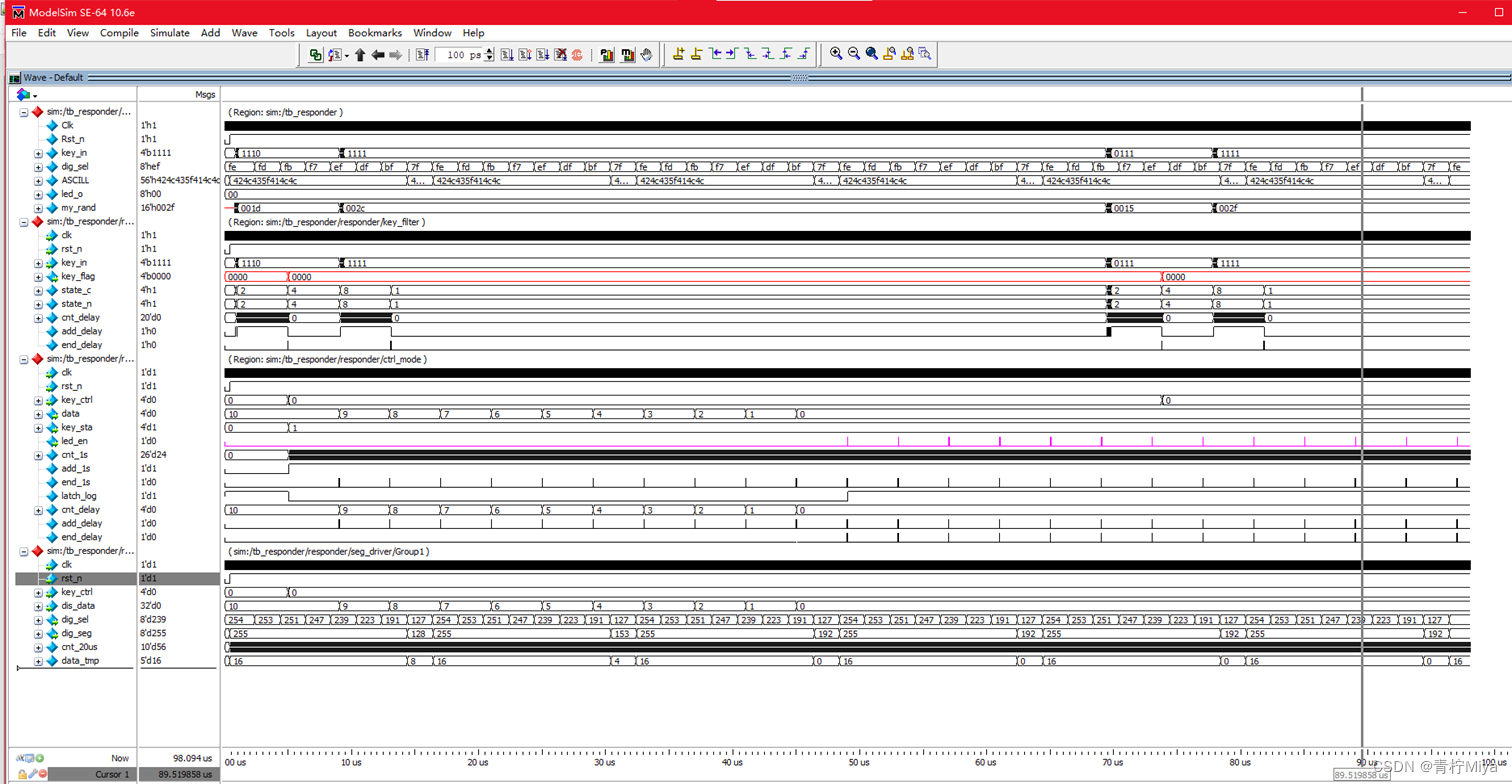
3.4、 Board level verification
3.4.1、 Top level documents
The top-level document is not explained here , According to the following RTL View , I believe that readers can easily complete the corresponding code design
RTL View 
The specific implementation effect is as expected , Please explore by yourself
4、 summary
This design realizes the basic functions
In the design process , Due to bit width mismatch (quartus No mistake. , Warning only ), Cause the program to run incorrectly , The specific reason can only be determined after several times of error detection
so , I warn you , When describing signals , Be sure to match the bit width
边栏推荐
- Template initial level template
- 测试优惠券要怎么写测试用例?
- The opacity value becomes 1%
- Transaction rolled back because it has been marked as rollback-only解决
- [OneNote] can't connect to the network and can't sync the problem
- Unity websocket client
- "Dream Cup" 2017 Jiangsu information and future primary school summer camp it expert PK program design questions
- [STM32] actual combat 3.1 - drive 42 stepper motors with STM32 and tb6600 drivers (I)
- SQL Server knowledge collection 11: Constraints
- The sixth training assignment
猜你喜欢
随机推荐
[untitled]
Which securities company is the best and safest to open an account for the subscription of new shares
2021-04-08
How to play video on unityui
如何在博客中添加Aplayer音乐播放器
Shardingsphere sub database and table examples (logical table, real table, binding table, broadcast table, single table)
PostgreSQL中的表复制
verilog设计抢答器【附源码】
Go-Redis 中间件
Force buckle 1002 Find common characters
Poj1821 fence problem solving Report
VR development optimization
PR Lecture Notes
Unity script visualization about layout code
常用sql语句整理:mysql
Kitex retry mechanism
How to get hardware information in unity
mif 文件格式记录
[untitled]
Introduction to shell programming
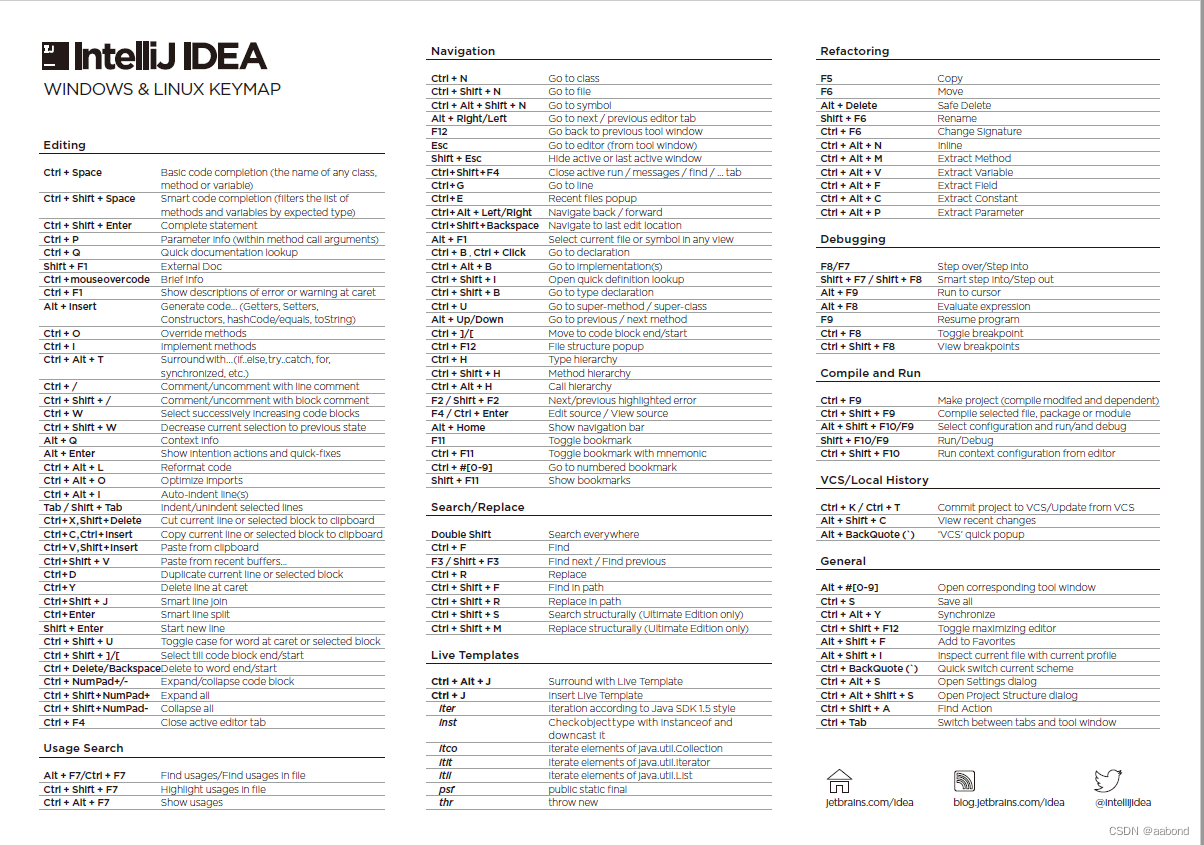

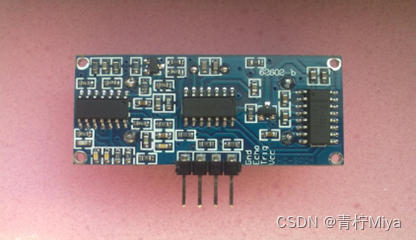
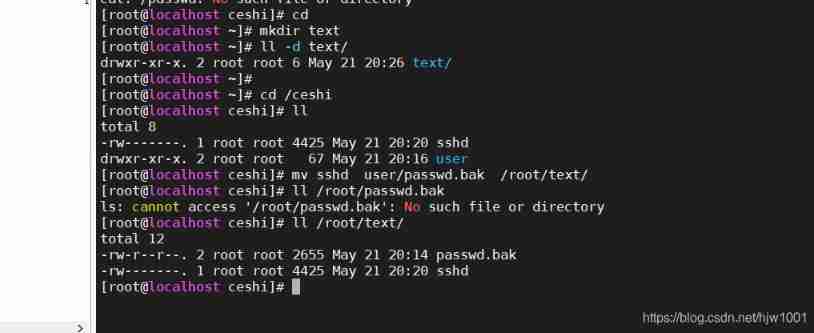
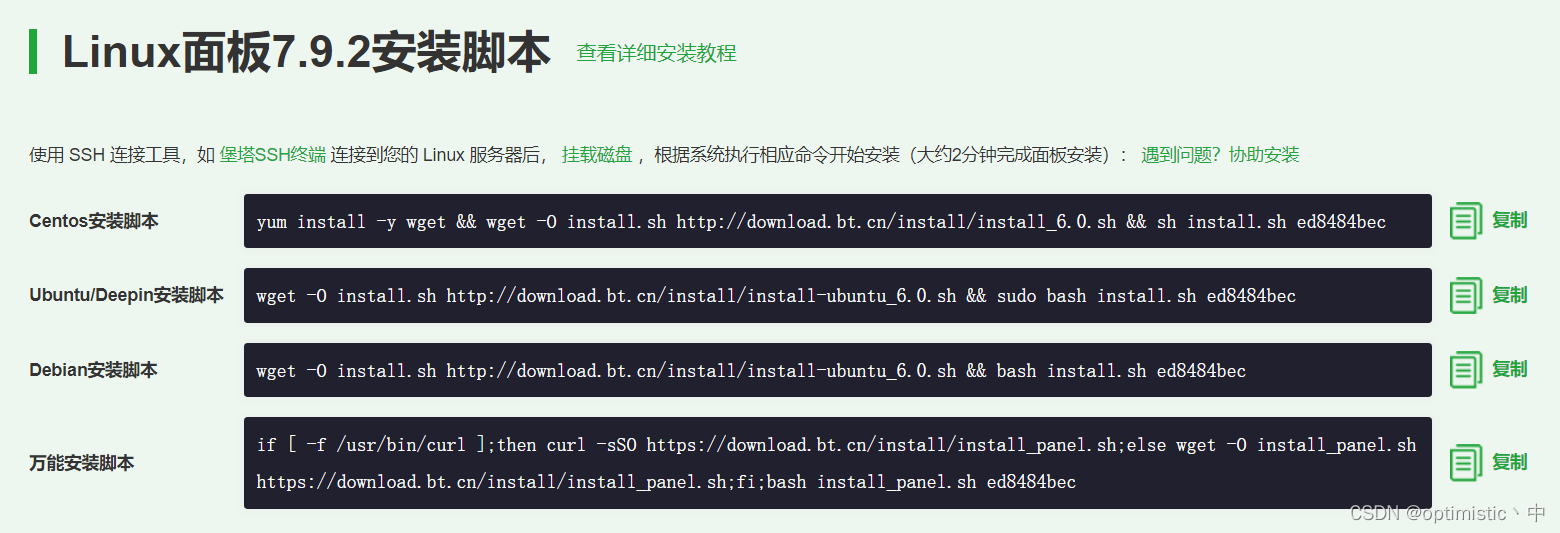
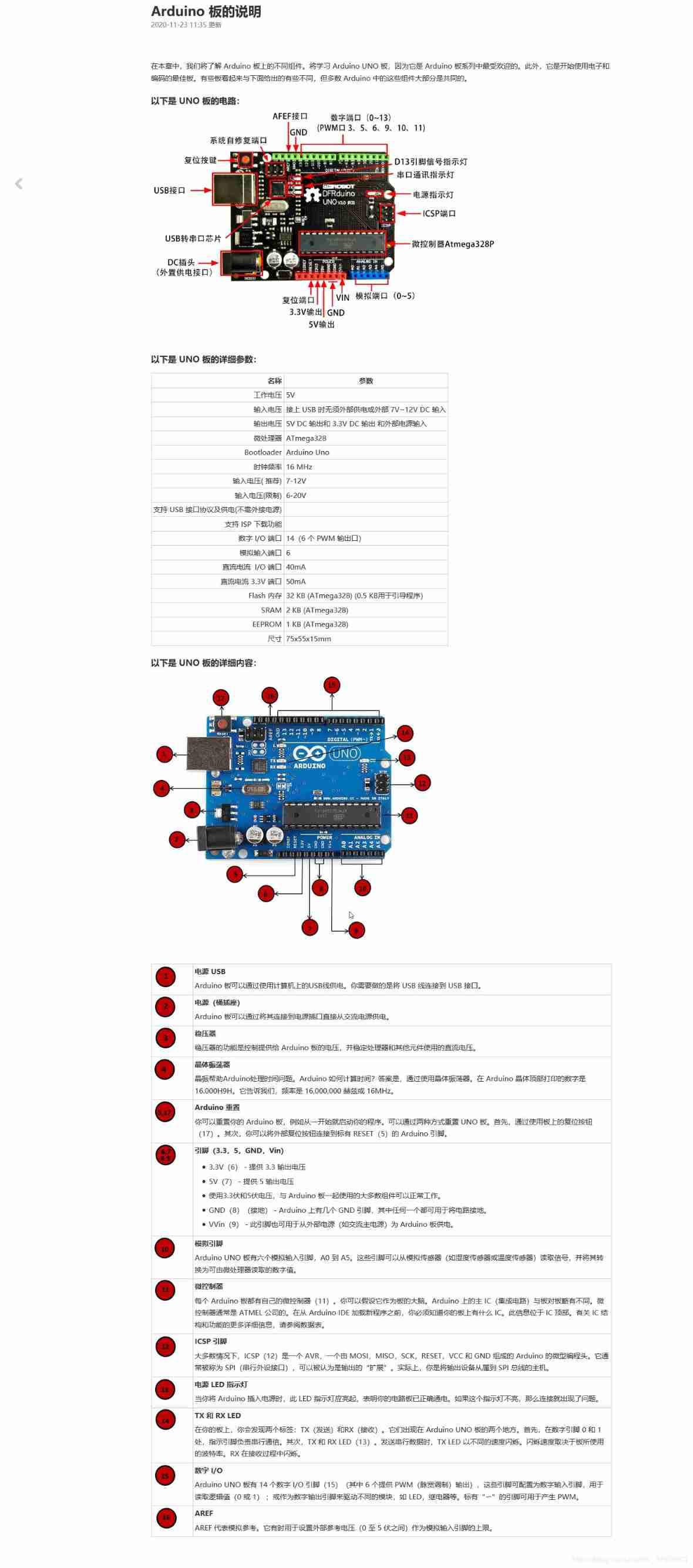

![[untitled]](/img/f9/18b85ad17d4c560f2b9d95a53ee72a.jpg)
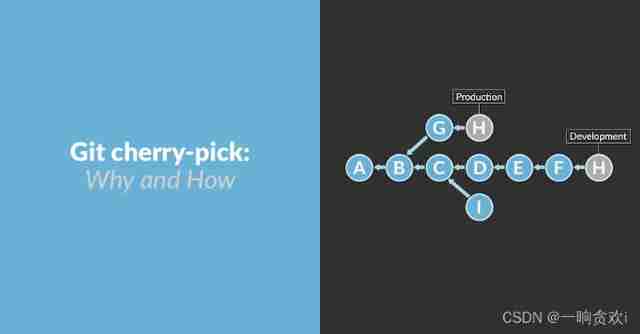
![[STM32] actual combat 3.1 - drive 42 stepper motors with STM32 and tb6600 drivers (I)](/img/cd/7cd8e2e77419c65d633a2a235b2362.png)